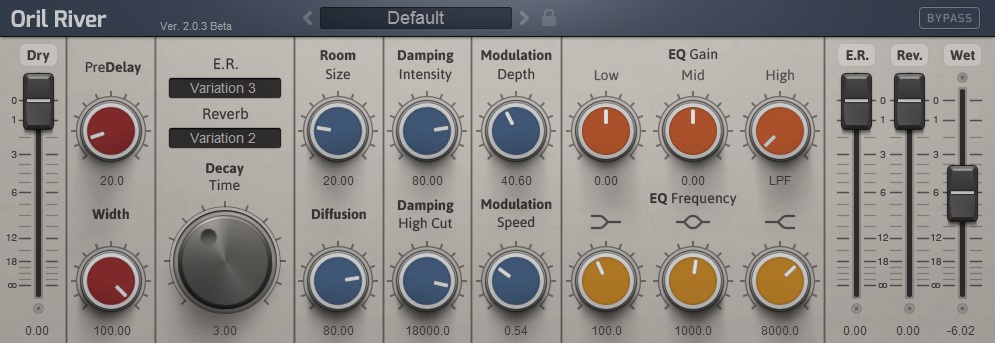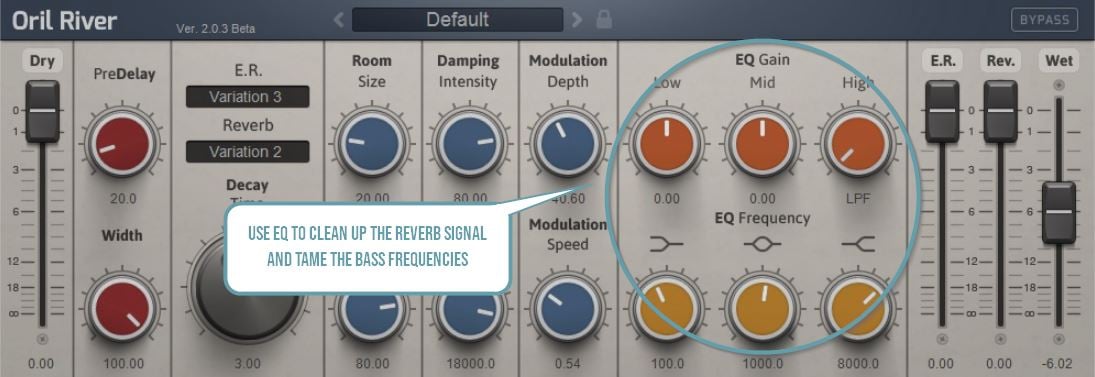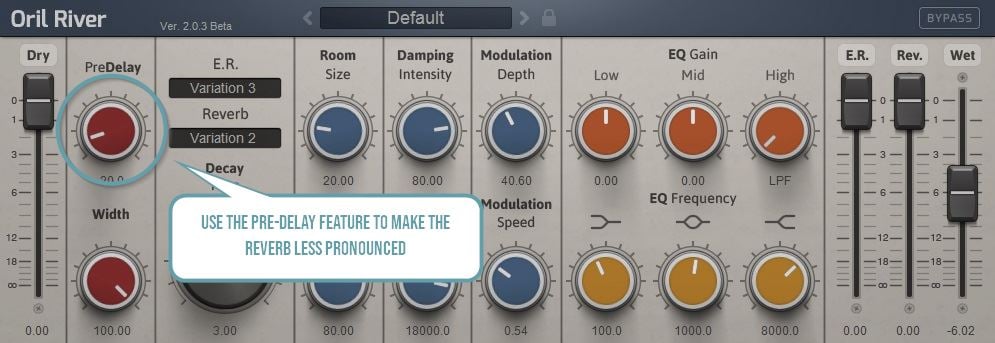Reverb is a cornerstone of mixing, and understanding it is essential to making pro mixes.
Today we will address mixing with reverb and cover 5 tips on how to get the most out of this wily beast.
What is a reverb?
In the context of music production, reverb is an electronically produced echo effect that simulates the reverberation properties of an acoustic space.
When you hear a musician play in real life, their performance will reverberate in the room. We are used to hearing music this way. Music recorded without reverb sounds odd to us.

Reverb plugins can create depth, define the atmosphere, glue a mix together, bring elements forward to the listener’s attention (or push them back) and enhance the emotional impact of a song, among other functions.
Now let’s get into how to use reverb like a pro.
#1 Mix up your reverb types
There are various types of reverb effects, each with its own character. A good reverb tip is that experimenting with different types can help you achieve specific moods.
Using different reverb types within a mix can also provide greater depth. Using artificial reverbs such as plate or spring in combination with natural reverbs such as room, hall, and chamber can add additional contrast
Room reverb
Room reverb mimics the normal reverberations we hear in a room in everyday life. It’s a great all-rounder that can be used on almost every instrument and isn’t too overpowering.
If you’re going for an almost dry sound and want to add some color and excitement, then room reverb can do the trick.
Hall reverb
Hall reverb gives the sound of a concert hall and has a long decay.
It’s great for adding epic grandiosity to a part and is a natural fit for strings and pads. Keep in mind that it’s easy for hall reverb to get overwhelming.
Chamber reverb
Chamber reverb provides a lush sound similar to hall reverb, although it can be utilized to gain a bit more clarity than halls.
Plate reverb
Plate is an early artificial reverb and has a unique character that was extensively used in popular music in the late ‘60s and ‘70s, as well as via digital reproductions in the ‘80s.
The tone is bright, shimmery, and a little metallic. It’s often used to push vocals forward and to create big epic drum sounds with long tails and a vintage touch.
Spring reverb
Spring reverb is another artificial option that is bright, clean, and popular for retro sounds. Our free BPB Dirty Spring plugin is a good example.
It’s good as a color reverb and is often associated with guitar as a spring unit is present on numerous guitar amps.
#2 Show reverb restraint
Don’t automatically slap reverb on everything. When a recording has a combination of wet and dry (or drier) elements, it gains depth due to the contrast between those elements.
Think about which parts would benefit from a heavier reverb treatment and which need less reverb (or none at all).
Bass instruments typically have little or no reverb. Using reverb on bass instruments can add muddiness to the mix.
However, there are ways to tame the reverb’s frequency response, as discussed in the next point.
#3 Master parallel processing for bass reverb treatment
Many engineers have confidently asserted that reverb on bass is heresy and will condemn you to an eternity of muddy mixes, while others assert it’s essential on bass.
So what’s the truth?
Reverb, used carelessly on bass, can easily rob a mix of its power. However, using reverb properly can enhance a bass instrument’s depth and presence in a mix.
There are three approaches we’ll discuss here to achieve this:
- Using your reverb plugin’s integrated EQ;
- Parallel processing;
- Altering decay times via frequency ranges.
Using a reverb’s built-in EQ
Applying reverb correctly when mixing bass can involve using your reverb plugin’s EQ feature.
Many reverbs include an integrated EQ on the input, and you can use this to determine which frequencies the EQ will apply to.

You’ll want to cut the sub-bass to avoid muddiness. Optionally, you can remove the high frequencies, too, if the reverb adds harshness by accentuating them.
Reverb and parallel processing
An alternative approach to taming your reverb is parallel processing.
How to use parallel processing on a reverb?
Create an auxiliary channel, drop in your EQ as the first in the chain in the aux channel, then reverb, set the reverb mix to 100%, and send the dry instrument to the reverb.
You can then adjust how wet or dry you want the reverb to be via the send level (or aux fader).
This approach allows you to process the dry and reverb tracks separately and use the auxiliary channel to process multiple instruments, simplifying your workflow.
Parallel processing is also a common approach for using reverb on other instruments for the same reasons.
Adjusting the reverb decay time
Some reverbs also have parameters to alter the decay time of different frequencies. You can use this feature to clean up low frequencies with shorter decay times while gaining the benefits of reverb on the higher frequencies with longer decays.
This technique works even if your reverb plugin doesn’t let you control the decay for different frequency ranges independently. Use a shorter decay on bass instruments to remove the excess muddiness, and use a separate high-passed reverb to add more space.
#4 The power of reverb pre-delay
One of the great tips for better reverb is using pre-delay.
A dry instrument is punchy and immediately sticks out to our ears. On the other hand, a wet instrument can glue in the mix better, with a pleasant color and spatial dimension to it.
What if we want the best of both worlds? The answer is pre-delay.

This parameter delays the entry of the reverb onto the signal by a set amount of milliseconds (ms) and can be found in your reverb settings.
Why does reverb pre-delay matter?
If you give the listener a dry signal of your vocal briefly, it’ll really pop into their ears and make them notice it. Then after the pre-delay ends, the reverb will engage, and the part will take on the pleasant qualities of the reverb.
40ms is a good starting point, with 10ms to 80ms being a good ballpark range for fine-tuning your reverb pre-delay.
#5 Monitoring matters
When considering how to use reverb, be aware that the sound source can alter our perception of reverb. Mixing with headphones can make the reverb sound more pronounced to our ears, as the difference between wet and dry is very stark in a closed environment.
However, when you mix with studio monitors, you’ll get some natural reverberation from the room. When you add reverb in your DAW, the difference won’t sound as obvious. With untreated rooms, this effect is ever stronger.
Therefore if you rely too heavily on headphones, you might create dry-sounding mixes and vice versa.
Return to our music mixing guide for more information about audio mixing.
Last Updated on March 24, 2023 by Tomislav Zlatic.







